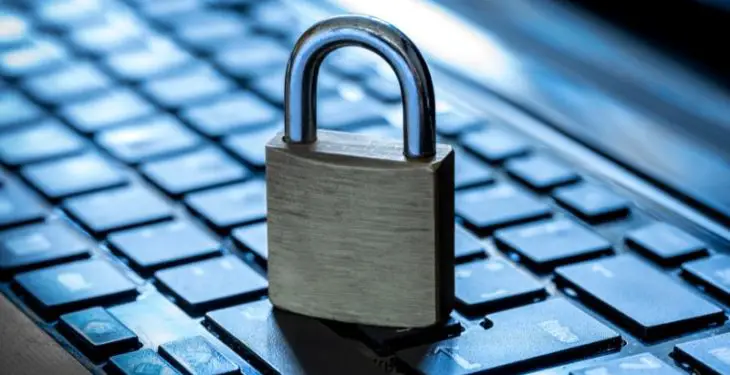The digital landscape today has been evolving toward rapid technological advancements. The need for cybersecurity has increased more than ever. No matter the size of an organization, it has become vital to protect systems, networks, and data from malicious attacks. Especially for organizations within the Defense Industrial Base (DIB), it is critical to safeguard sensitive government information. CMMC training equips these DIB organizations and individuals with the cyber security knowledge necessary for compliance.
If you are looking for CMMC training and are exploring the concept, this blog can be a perfect read for you. We will delve into understanding CMMC training, its maturity levels, and the role it plays in enhancing cybersecurity practices. Let us discuss how the training can help organizations build a roadmap and navigate through the dynamic challenges of the digital landscape.
Understanding CMMC Training
The U.S. Department of Defense (DoD) introduced the Cybersecurity Maturity Model Certification (CMMC) as a framework for organizations within the Defense Industrial Base (DIB). It is a set of practices used to safeguard critical government information. The model stands as a standardized requirement for defense contractors and subcontractors. The CMMC Training courses help familiarize you with the tools and techniques for compliance. It provides knowledge of effective plans and processes to be implemented against cyber security threats.
CMMC framework follows a tired approach with different maturity levels. The levels indicate the state of the cybersecurity practices in the organization and the necessary actions to be taken. The training enables organizations to progress towards higher levels of maturity gradually. Here, we have outlined the five levels of maturity that can appropriately identify the CMMC level of your organization.
Level 1: Performed
This level focuses on basic cybersecurity hygiene practices and processes. It is the starting point for new organizations to integrate cybersecurity into their systems. The organizational practice to be developed for this level is basic cyber hygiene. It can include using antivirus software, securing physical access to systems, and conducting basic cybersecurity awareness training for employees.
Level 2: Documented
This level focuses on more developed cybersecurity practices. It is about demonstrating a bit higher commitment to protecting sensitive information. The organizational practice to be developed for this level is intermediate cyber hygiene. It can include documentation and implementation of cybersecurity policies, controlled access to information, and regular security awareness training.
Level 3: Managed
This level focuses on having a good foundation of cybersecurity practices. It is about showcasing the ability to protect controlled unclassified information (CUI). The organizational practice to be developed for this level is good cyber hygiene. It includes the establishment of a comprehensive cybersecurity program. There must be monitoring and control of communications at internal and external boundaries. The organization must be able to develop incident response capabilities.
Level 4: Reviewed
This level focuses on effective anticipation of threats and vulnerabilities to ensure the protection of CUI from advanced persistent threats. The organizational practice must be proactive at this level. It involves integrating advanced security measures. The organization must implement continuous monitoring of security controls, advanced threat hunting, and enhanced incident response capabilities.
Level 5: Optimized
This level focuses on advanced cybersecurity capabilities. The organization must be able to optimize and evolve its cybersecurity practices continually. The organizational practice must be progressive for this level. It includes optimization of cybersecurity processes, continuous improvement through innovation, and adaptive responses to emerging threats. Upon reaching this level, the companies will be able to stay ahead of evolving cybersecurity challenges.
CMMC Training for Enhanced Cybersecurity Practices
CMMC training can help organizations and individuals be well-equipped with the knowledge of proper cybersecurity. It can play a major role in an organization. The training can save businesses from major incidents and losses arising from cyber threats. Here, we have highlighted some of the roles of CMMC training in enhancing cybersecurity practices.
1) Comprehensive Understanding
CMMC training begins by providing a comprehensive understanding of the Cybersecurity Maturity Model Certification framework. Through the training, you will be able to learn about the five maturity levels. From basic cyber hygiene to advanced capabilities, this training can specify practices to be implemented for each level. This knowledge helps to assess the organization’s current cybersecurity state and determine the necessary steps for improvement.
2) Risk Management
CMMC training focuses on the importance of identifying, assessing, and managing cybersecurity risks. It helps to understand the types of data and information that require protection. The training helps to evaluate potential threats and vulnerabilities. As a result, you will be able to implement effective risk mitigation strategies. The CMMC model prioritizes robust risk management practices that can safeguard sensitive government information.
3) Implementation of Security Controls
CMMC training teaches how to implement the security controls outlined in the framework. The training helps to understand technical measures such as encryption and access controls for security. Similarly, non-technical measures, such as policies and procedures, are highlighted. It provides practical guidance on configuring systems and networks. The CMMC model secures the organization against cyber threats and maintains necessary compliance.
4) Awareness and Accountability
CMMC training focuses on the importance of creating an informed workforce. The training program educates on the latest cyber threats, phishing scams, and social engineering tactics. It helps the workforce be vigilant against cyber security threats. Further, CMMC training highlights the role of individuals in maintaining a secure environment. It can help to create a sense of accountability and responsibility to report any suspicious activities promptly.
5) Incident Response and Recovery
CMMC training helps to develop and implement incident response plans. It teaches the ways to prepare organizations for any mishaps. The training facilitates the ability to detect and respond to cybersecurity incidents promptly. You will be able to take the necessary steps during and after the crisis. This knowledge ensures a coordinated and effective response, minimizing the severe impact on operations and data integrity.
6) Continuous Improvement
CMMC training helps to promote the practice of continuous improvement in cybersecurity. It integrates cybersecurity into daily operations, decision-making processes, and employee behaviors. The training can make the organization aware of the dynamic nature of cyber threats and the need to stay abreast. It builds a culture where security is not viewed as a separate function.
7) Reduction in Security Incidents
CMMC training helps to recognize and mitigate potential security incidents. The training instills a proactive mindset. It enables organizations to implement security protocols and follow the best practices. It results in creating a solid system to safeguard the information and data of the company. As a result, the possibility of security incidents is reduced significantly.
Conclusion
CMMC training can significantly enhance the cyber security practices in an organization. The goal is to foster an environment where cybersecurity is not a standalone function but an integral part of the organizational culture. The flexible framework ensures that businesses meet their specific requirements while ensuring a standardized approach to protecting sensitive government information. It can create a resilient system against unauthorized access, disclosure, and manipulation. CMMC training is more than just a checklist of compliance measures; it is a strategic investment to adapt to evolving cybersecurity threats.






